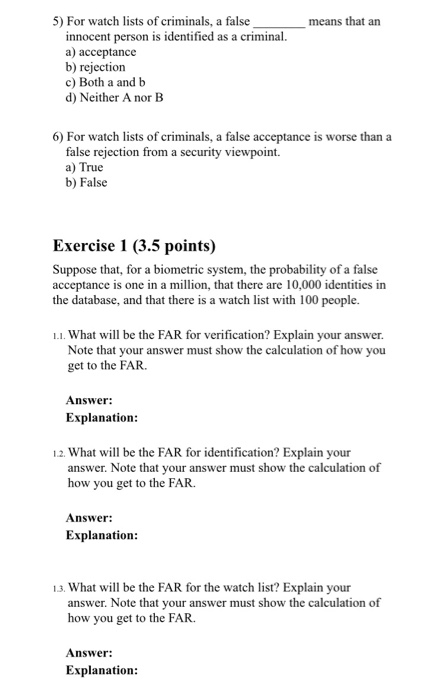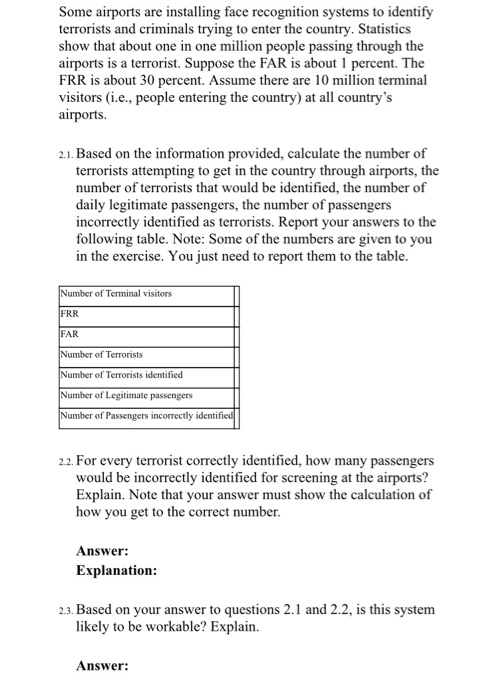means that an 5) For watch lists of criminals, a false innocent person is identified as a criminal. a) acceptance b) rejection c) Both a and b d) Neither A nor B 6) For watch lists of criminals, a false acceptance is worse than a false rejection from a security viewpoint. a) True b) False Exercise 1 (3.5 points) Suppose that, for a biometric system, the probability of a false acceptance is one in a million, that there are 10,000 identities in the database, and that there is a watch list with 100 people. 1.1. What will be the FAR for verification? Explain your answer. Note that your answer must show the calculation of how you get to the FAR. Answer: Explanation: 1.2. What will be the FAR for identification? Explain your answer. Note that your answer must show the calculation of how you get to the FAR. Answer: Explanation: 13. What will be the FAR for the watch list? Explain your answer. Note that your answer must show the calculation of how you get to the FAR. Answer: Explanation: Some airports are installing face recognition systems to identify terrorists and criminals trying to enter the country. Statistics show that about one in one million people passing through the airports is a terrorist. Suppose the FAR is about 1 percent. The FRR is about 30 percent. Assume there are 10 million terminal visitors (i.e., people entering the country) at all country's airports. 2.1. Based on the information provided, calculate the number of terrorists attempting to get in the country through airports, the number of terrorists that would be identified, the number of daily legitimate passengers, the number of passengers incorrectly identified as terrorists. Report your answers to the following table. Note: Some of the numbers are given to you in the exercise. You just need to report them to the table. Number of Terminal visitors FRR FAR Number of Terrorists Number of Terrorists identified Number of Legitimate passengers Number of Passengers incorrectly identified 2.2. For every terrorist correctly identified, how many passengers would be incorrectly identified for screening at the airports? Explain. Note that your answer must show the calculation of how you get to the correct number. Answer: Explanation: 2.3. Based on your answer to questions 2.1 and 2.2, is this system likely to be workable? Explain








